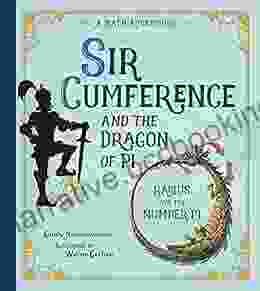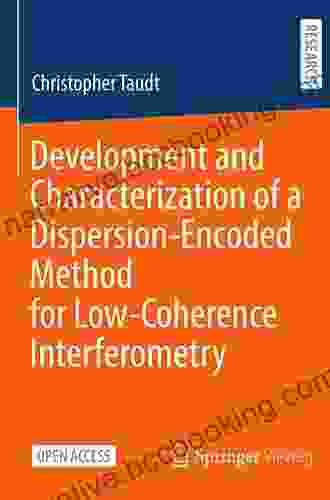Unlocking the Potential of Low Coherence: A Comprehensive Guide to Development and Characterization of Dispersion Encoded Methods

Low coherence interferometry (LCI) has emerged as a transformative technique in diverse fields, from biomedical imaging and optical metrology to remote sensing and telecommunications. At the heart of LCI lies the ability to encode information onto the coherence of light, offering unique capabilities for extracting valuable data from complex optical signals.
The dispersion encoded method (DEM) is a groundbreaking approach within LCI that leverages the dispersion properties of optical fibers to encode data onto the temporal coherence of light. This technique has revolutionized the field of LCI, enabling advancements in sensing, imaging, and communication technologies.
This comprehensive article delves into the intricate details of the DEM, providing a thorough understanding of its development, characterization, and practical applications. We will explore the fundamental concepts, methodologies, and key considerations involved in effectively employing the DEM for various applications. Whether you're a seasoned researcher, a budding engineer, or an inquisitive enthusiast, this article aims to equip you with an in-depth knowledge of the DEM and its transformative impact on the field of low coherence.
4.7 out of 5
| Language | : | English |
| File size | : | 25272 KB |
| Text-to-Speech | : | Enabled |
| Screen Reader | : | Supported |
| Enhanced typesetting | : | Enabled |
| Print length | : | 284 pages |
The DEM was first proposed in 2005 by Prof. J. Santos and Prof. R. G. Cruz as a novel approach to enhance the performance of LCI systems. The technique involves manipulating the dispersion of light in optical fibers to encode data onto the temporal coherence of the light.
The dispersion of an optical fiber is a measure of how the speed of light varies with its wavelength. By carefully controlling the dispersion characteristics of the fiber, it becomes possible to introduce specific delay variations to the different wavelength components of the light. These delay variations, when detected using an appropriate receiver, can be decoded to retrieve the encoded data.
The development of an effective DEM involves careful consideration of several key parameters:
Fiber Dispersion: The dispersion of the optical fiber plays a crucial role in determining the data capacity and sensitivity of the DEM system. Fibers with high dispersion values allow for larger data encoding but may result in reduced coherence lengths.
Light Source Bandwidth: The bandwidth of the light source affects the number of distinguishable coherence peaks that can be encoded. Wider bandwidth sources provide higher data capacity but may be limited by the fiber's dispersion characteristics.
Receiver Design: The receiver plays a critical role in detecting the encoded data. It must be designed to have a high sensitivity and a suitable bandwidth to capture the temporal coherence variations.
Once a DEM system is developed, it is essential to characterize its performance to assess its effectiveness. Several metrics are used to characterize DEM systems, including:
Data Capacity: The data capacity refers to the amount of data that can be encoded onto the coherence of the light. It is typically measured in bits per second (bps).
Sensitivity: The sensitivity of a DEM system is a measure of its ability to detect small changes in the coherence of light. It is usually expressed in decibels (dB).
Coherence Length: The coherence length is a measure of the distance over which the coherence of the light is maintained. It plays a key role in determining the maximum sensing depth of the system.
The DEM has found widespread applications in various fields, including:
Optical Sensing: DEM-based sensors have been developed for strain, temperature, and gas sensing. These sensors offer high sensitivity and can be used for remote and non-invasive measurements.
Optical Imaging: DEM has been employed in optical coherence tomography (OCT) systems for biomedical imaging. DEM-OCT provides enhanced imaging depth and improved resolution, enabling more accurate diagnosis and treatment planning.
Optical Communications: DEM has the potential to revolutionize optical communications by increasing the data传输 capacity of fiber optic networks. It can enable higher data rates and more secure communications.
The development and characterization of dispersion encoded methods have opened new frontiers in the field of low coherence interferometry. By manipulating the coherence of light, DEM has empowered researchers and engineers to develop innovative sensing, imaging, and communication technologies.
This comprehensive article has provided an in-depth exploration of the DEM, its development, characterization, and diverse applications. We have highlighted the key principles, considerations, and challenges associated with the DEM, equipping you with a solid understanding of this revolutionary technique.
As the field of LCI continues to evolve, the DEM is poised to play an increasingly significant role in advancing our understanding of the world around us and in shaping the future of optical technologies.
4.7 out of 5
| Language | : | English |
| File size | : | 25272 KB |
| Text-to-Speech | : | Enabled |
| Screen Reader | : | Supported |
| Enhanced typesetting | : | Enabled |
| Print length | : | 284 pages |
Do you want to contribute by writing guest posts on this blog?
Please contact us and send us a resume of previous articles that you have written.
 Book
Book Novel
Novel Page
Page Chapter
Chapter Text
Text Story
Story Genre
Genre Reader
Reader Library
Library Paperback
Paperback E-book
E-book Magazine
Magazine Newspaper
Newspaper Paragraph
Paragraph Sentence
Sentence Bookmark
Bookmark Shelf
Shelf Glossary
Glossary Bibliography
Bibliography Foreword
Foreword Preface
Preface Synopsis
Synopsis Annotation
Annotation Footnote
Footnote Manuscript
Manuscript Scroll
Scroll Codex
Codex Tome
Tome Bestseller
Bestseller Classics
Classics Library card
Library card Narrative
Narrative Biography
Biography Autobiography
Autobiography Memoir
Memoir Reference
Reference Encyclopedia
Encyclopedia Chase Hassen
Chase Hassen Chris Duff
Chris Duff Chris Glover
Chris Glover Christophe P Yerling Ph D
Christophe P Yerling Ph D Christopher J Lebron
Christopher J Lebron Charles Slack
Charles Slack Charles Person
Charles Person Chad Johnson
Chad Johnson Christopher L Cirillo
Christopher L Cirillo Chuck Street
Chuck Street Christine Schwab
Christine Schwab Celia Lyttelton
Celia Lyttelton Charles J Thayer
Charles J Thayer Chris Vines
Chris Vines Charles R Miller
Charles R Miller Christopher Wilson
Christopher Wilson Cherise Castle Blugh
Cherise Castle Blugh Charles Sumner
Charles Sumner Chris Kennedy
Chris Kennedy Christy Hale
Christy Hale
Light bulbAdvertise smarter! Our strategic ad space ensures maximum exposure. Reserve your spot today!
 Nikolai GogolFollow ·8.5k
Nikolai GogolFollow ·8.5k Christian CarterFollow ·4.7k
Christian CarterFollow ·4.7k Desmond FosterFollow ·19.2k
Desmond FosterFollow ·19.2k Edward BellFollow ·11.5k
Edward BellFollow ·11.5k Roland HayesFollow ·10.5k
Roland HayesFollow ·10.5k Eric HayesFollow ·2.5k
Eric HayesFollow ·2.5k DeShawn PowellFollow ·9.1k
DeShawn PowellFollow ·9.1k Henry Wadsworth LongfellowFollow ·14k
Henry Wadsworth LongfellowFollow ·14k

 J.R.R. Tolkien
J.R.R. TolkienEscape to the Culinary Paradise: "Truck Stop Deluxe In...
Prepare your palate for an...

 Andres Carter
Andres CarterA Taste of the Unusual: Discover the Enchanting World of...
Prepare to be captivated by "Cindy Supper...

 Nick Turner
Nick TurnerChild Obesity: Introducing the Idea of Healthy Weight
Child obesity is a serious...

 Junot Díaz
Junot DíazGoing Local: Your Ultimate Guide to Swiss Schooling |...
In the heart of Europe, Switzerland boasts a...

 Raymond Parker
Raymond ParkerSir Cumference and the Dragon of Pi: A Mathematical Fable
In the enchanting realm of...

 Thomas Powell
Thomas PowellUnveiling the Enchanting Realm of Curious Creatures from...
Russian folklore is a rich tapestry of...
4.7 out of 5
| Language | : | English |
| File size | : | 25272 KB |
| Text-to-Speech | : | Enabled |
| Screen Reader | : | Supported |
| Enhanced typesetting | : | Enabled |
| Print length | : | 284 pages |












